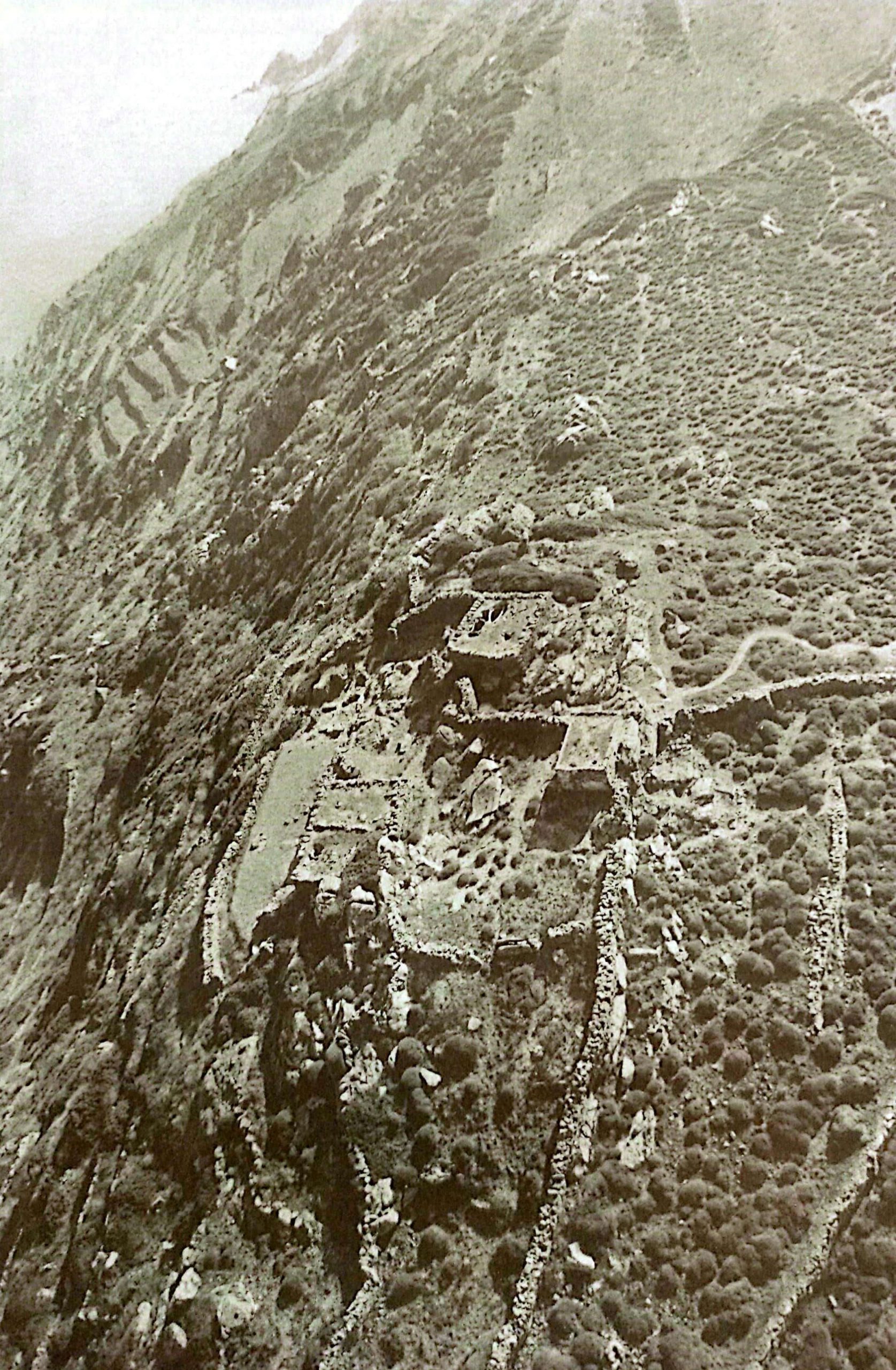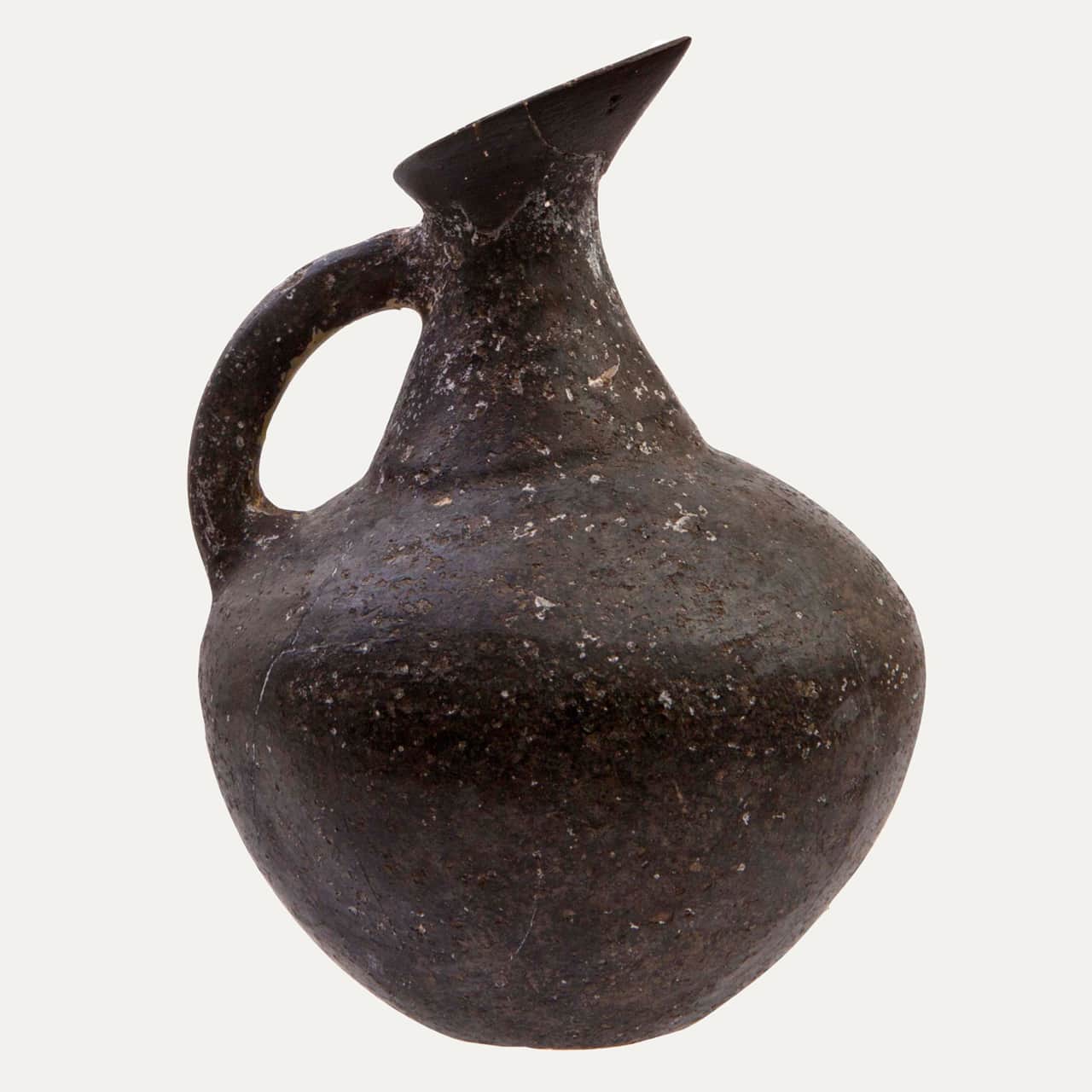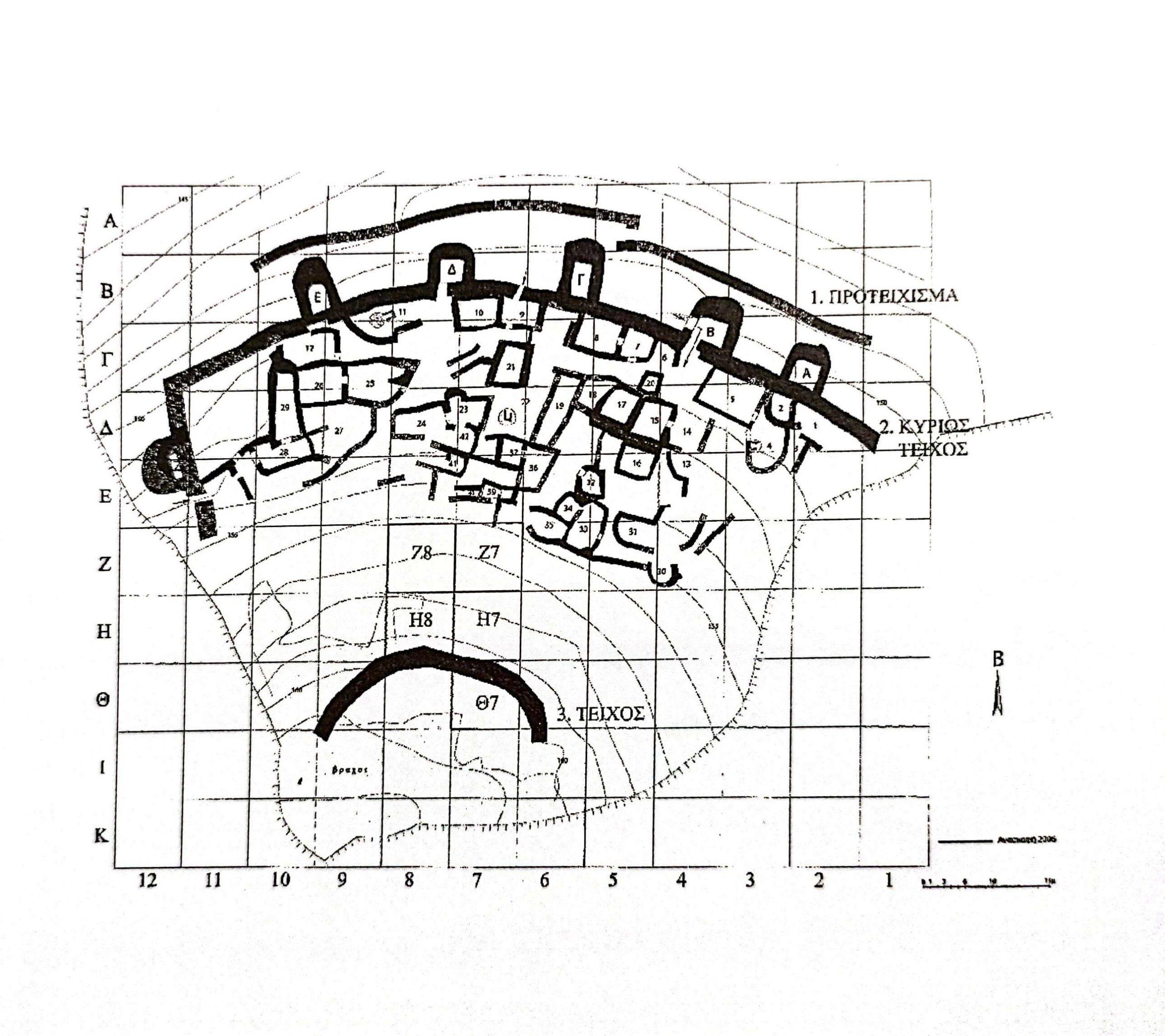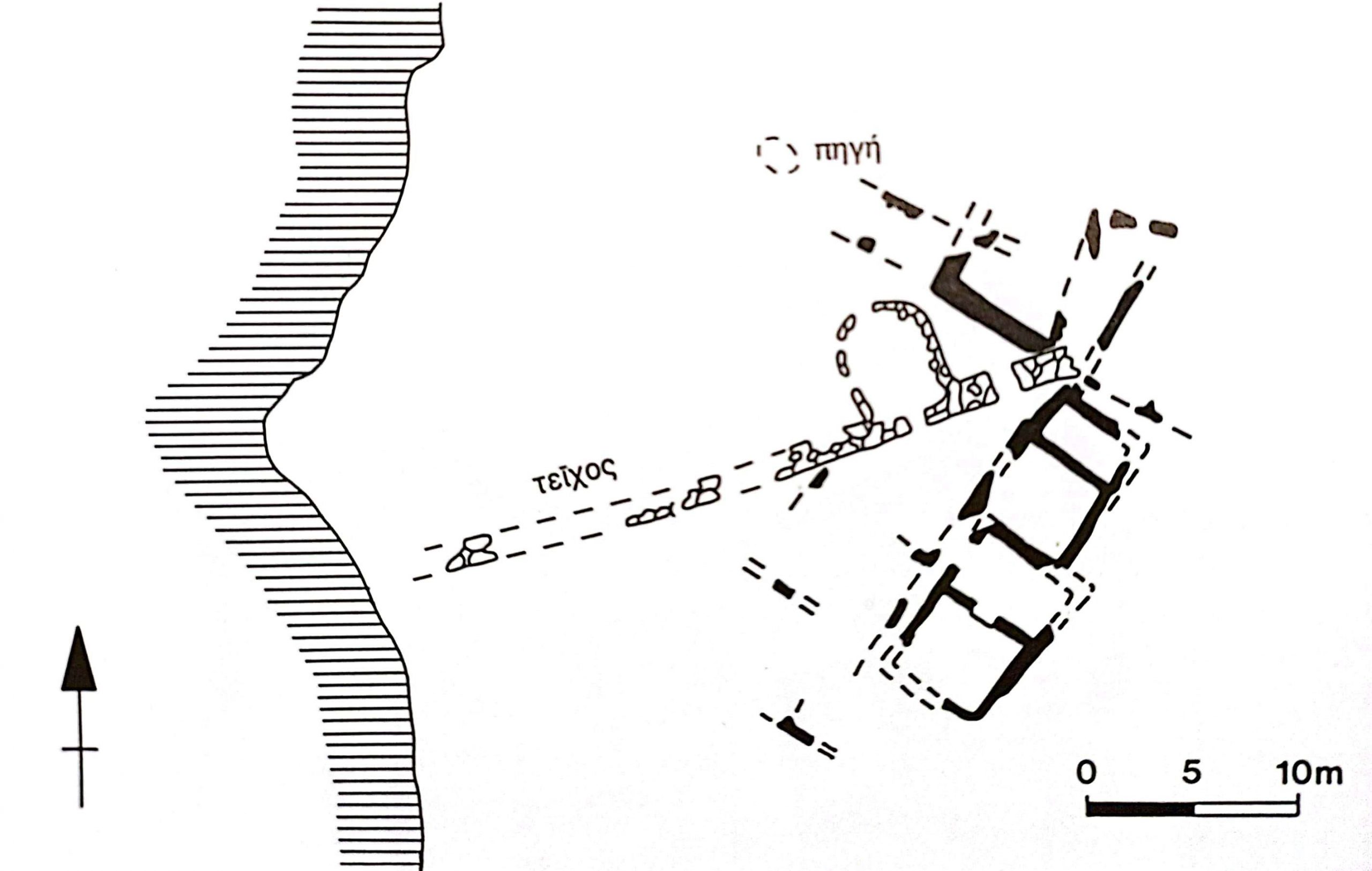Settlements of the Cyclades in the 3rd millenium BC
CYCLADIC ART

In this period, other civilizations developed in mainland Greece (Early Helladic), Crete (Early Minoan), and the eastern Aegean. The Early Cycladic Culture covers the period from around 3200 BC to 2000 BC and is divided into three sub-periods: the Early Cycladic I (c. 3200 – 2800 BC), the Early Cycladic II (c. 2700 – 2400/2300 BC), and the Early Cycladic III (c. 2300 – 2000 BC).
Between each sub-period, transitional phases have been identified: the transitional phase from the Early Cycladic I to the Early Cycladic II (the so-called ‘Kampos phase’ (c. 2800 – 2700 BC) and the transitional phase from the Early Cycladic II to the Early Cycladic III period, the so-called ‘Kastri phase’ (c. 2500/2400 – 2300 BC). As there is no evidence of writing from this period, our information about this culture stems from the movable and immovable finds in the settlements and cemeteries.
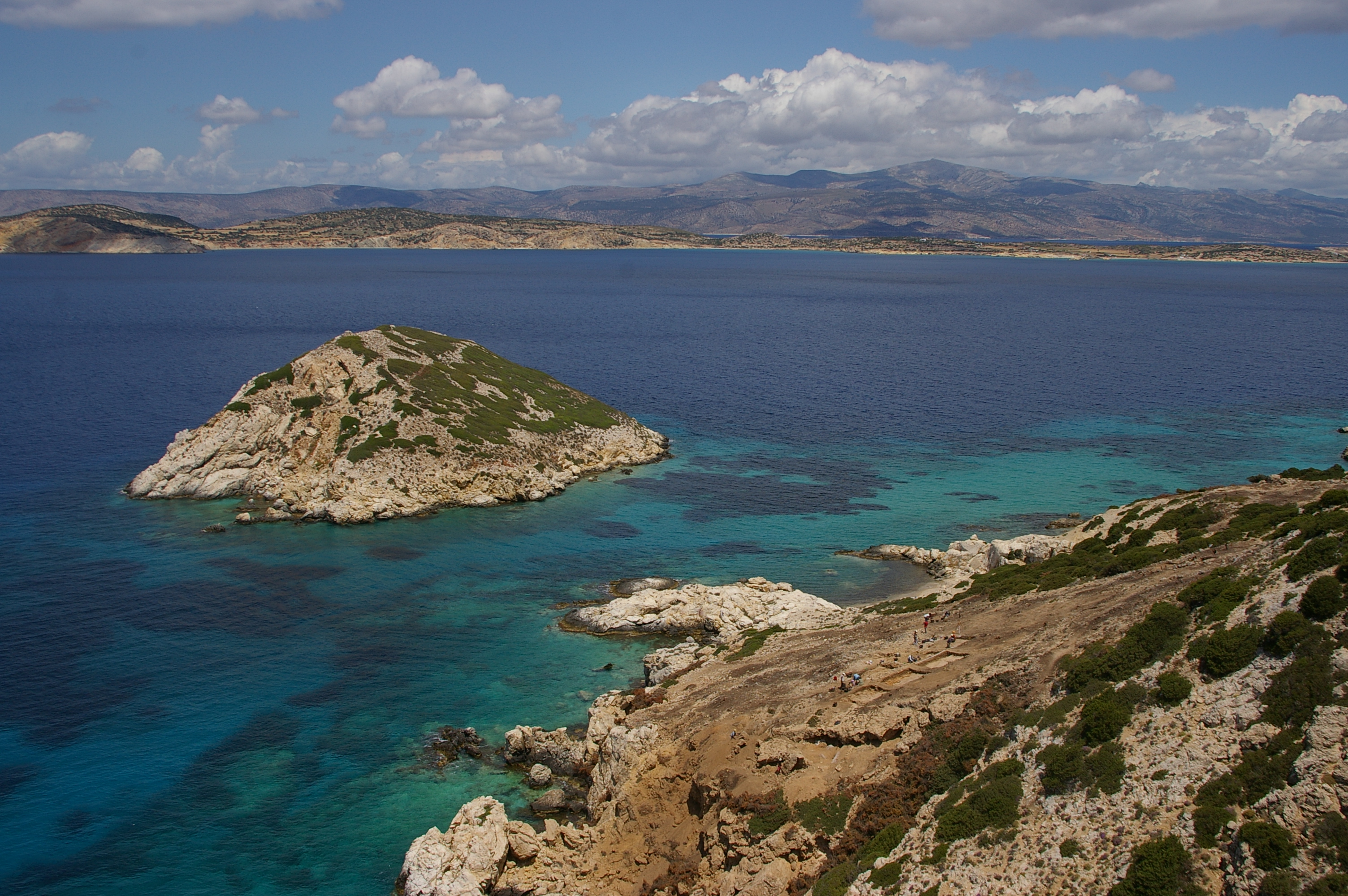
The settlements of the Early Bronze Age in the Cyclades were built in locations that provided the inhabitants with access to maritime communication and safe anchorages, as well as protection from natural disasters and enemy attacks.
They were usually built on capes, low hills, slopes, or naturally fortified places near the sea. However, there were also cases of settlements in the interior of the islands.
EARLY CYCLADIC I PERIOD (3200 – 2800 BC)
The Early Cycladic I period is also known as the cultural group of Grotta – Pelos (c. 3500 – 2700 BC) from the sites of Naxos and Melos. Our knowledge about life in this period is minimal as archaeologists have not found any large and organized settlements. Although it is possible that such settlements could have been constructed with perishable materials, it may also reflect a different way of society organization. The far-reaching geographical spread of cemeteries in this period, combined with their relatively small size, suggests that they served small and relatively isolated settlements – possibly farmsteads inhabited by members of a larger family. The few architectural remains from Grotta on Naxos indicate that the houses differed little from those of the Late Neolithic Kefala on the island of Kea. The houses were relatively rectangular, with one or two rooms, and the walls were carefully built either directly on natural rock or on a substrate of small stones.
However, at least one settlement – the one in Markiani of Amorgos – seems to have been fortified during the Early Cycladic I period (c. 3200 – 2800 BC) on its northern side (the rest of the settlement has a very steep slope towards the sea). The settlement was continuously inhabited from the Early Cycladic I to the Early Cycladic III period (ranging from 3200 – 2200 BC). Furthermore, a study of soil erosion in the settlement showed an uninterrupted occupation for about 800 years. The fortification wall, with its horseshoe-shaped bastions, was built directly on the natural rock. While the bastions on the hill of Markiani do not differ from the other known examples of fortifications of the Early Cycladic II period (c. 2700 – 2400/2300 BC) in the Aegean (Kastri of Syros, Korfari ton Amygdalion in Panormos of Naxos), they had a longer period of occupation, as excavation research has shown that they were abandoned during the Kastri phase (2500 – 2300 BC).
Overall, the settlement seems to have had about 12 to 15 households (each occupying 40 to 80 square meters) with a population totaling around 60 to 75 people. The fortification of Markiani dates to the Early Cycladic I period (c. 3200 – 2800 BC), while the bastions date to the Early Cycladic II period (c. 2700 – 2400/2300 BC); a fact that is supported by the typological parallels at Kastri on Syros and at the Korfari ton Amygdalion on Naxos. Although the northern bastion is generally considered to be a later addition, certain details, such as the relationship of its stones to the fortification wall and its long and uninterrupted occupation, allow the potential hypothesis of an earlier date.
EARLY CYCLADIC II PERIOD (2700 – 2400/2300 BC)
In the heyday of the Early Cycladic culture – the Early Cycladic II period (c. 2700 – 2400/2300 BC) – the settlements were very dense and were built on small peninsulas and on low hills, and each settlement’s size varied. Some of them were even fortified, such as the acropolis of Kastri on Syros and Panormos on Naxos. The urban design of the settlements adapted to the terrain’s morphology, and the houses, which usually consisted of one to three rooms and open spaces, were made of stone.
The Early Cycladic II period is also called the “golden age” of Early Cycladic culture, as, during that period, important technological developments and innovations took place. With such advancements, the development of the economy and, consequently, the increase in population became visible in the archaeological remains of the period.
One of the largest settlements of the period is Skarkos on Ios island, which boasts an area of about 11 acres. The settlement, which was surrounded by farmland, utilized a natural harbor. The settlement’s main period of occupation was the Early Cycladic II period. Located on a hilltop, a few of the settlement’s buildings date to the earliest phase – probably the transition phase from the Early Cycladic I to the Early Cycladic II (c. 2800 – 2700 BC).
The settlement is structured in 10 insulae and 55 buildings and is organized concentrically. However, the settlement was not protected by a separate defensive wall. At the beginning of the Early Cycladic II (c. 2700 BC), it seems that the level of protection had to be increased – this was done by sealing the openings of the outer zone of the settlement walls. Therefore, the buildings of the outer zone were transformed into a single perimeter wall for the demarcation and protection of the area. If this can be considered a fortification, then it has no parallel in the Early Cycladic architecture (possibly because no corresponding cases have been preserved or excavated so far).
The buildings of Skarkos were two-story (many of them are preserved to the upper floor, which was 3 or even 4 meters tall) and were arranged in concentric zones around wide streets and small squares. Overall, Skarkos was a well-designed settlement, with a drainage system that ran through its entire area – from the top of the hill to its base. The plan of Skarkos indicates that an organized effort was needed for its construction, and the excavation finds show that the settlement participated in regional trade networks. Agricultural, craft, and commercial activities were developing, as well specialized work, such as masonry, pottery, the making of tools, and the production of marble goods.
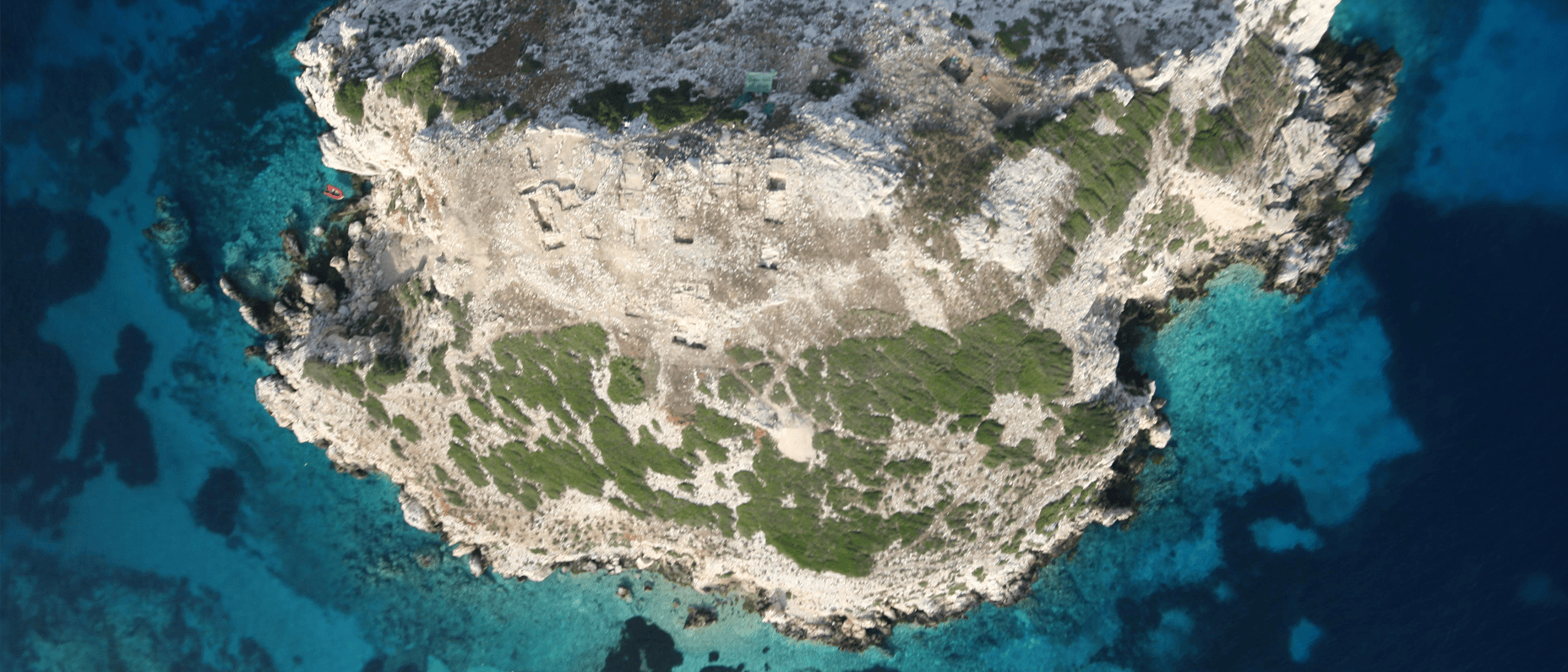
The largest Early Cycladic settlement – that we know of – is Dhaskalio on the island of Keros. The settlement has an area of about 13 acres, and archaeological research suggests a continuous habitation from the beginning of the Early Cycladic II to the beginning of the Early Cycladic III period (c. 2800/2700 – 2250 BC). Dhaskalio is an islet that, during the Early Bronze Age, was united with its neighbor, Keros island, and was in direct connection with the site of Kavos on Keros – a site that has been interpreted as an open-air pan-Cycladic sanctuary and a place of great symbolic importance for the islanders of that period. In this sanctuary, archaeologists found primary depositions of deliberately broken objects.
The landscape of Dhaskalio is quite steep below the summit, and, therefore, terrace walls had to be constructed in order to create flat surfaces on which the buildings could be built. These walls may have also served as a means of protection for the settlement. These elaborate terraces were built on terrain with a particularly difficult morphology. Many of the buildings were two-storey, but the majority of them were not of a residential nature. All were constructed of Naxos marble, the transportation of which required a high level of organized community effort and perhaps some form of centralized management or authority. Additionally, the settlement had a drainage system and a monumental staircase in its entrance.
Metallurgical workshops, a large number of bronze objects, as well as remains of metal-production processes illustrated the importance of metallurgy and metalworking to the people of Dhaskalio. The settlement was located in the center of a complex network of islands in the central Aegean. The careful planning, the transport of marble from Naxos for the construction of the buildings, and the skills required for the whole project indicate the scope of the effort and the importance of Dhaskalio to the islanders of the period.
Kastri phase (c. 2500/2400 – 2300 BC)
During the second half of the 3rd millennium BC, periods of unrest and rearrangements occurred in the wider Aegean area. This may have been due to population movements or conflicts over the control of mineral resources and their distribution networks. As a result, many settlements were temporarily abandoned, while others were occupied after enemy raids. At the same time, new settlements were established in difficultly accessed areas and were protected by strong fortifications.
These changes can be seen in the so-called Kastri group (c. 2500/2400 – 2300 BC) of pottery, which includes new shapes – such as the beak-spouted jug, the tankard (one-handled cup), the depas amphikypellon (two handled cup), etc. Artifacts from the Kastri group appear in almost the entire geographical range of the Cyclades (Panormos on Naxos, Kastri on Syros, Ayia Irini on Kea, Phylakopi on Melos, Akrotiri on Thera, Markiani on Amorgos, and Dhaskalio on Keros). Therefore, archaeologists associate the Kastri group to the settlements in which it was found. Many scholars believe that these styles originated in the East, as they were recognized typologically in parallel to Asia Minor and the Eastern and Northeastern Aegean. Similarly, the type of fortification with horseshoe-shaped bastions is also considered to be of Eastern origin.
Kastri, on the island of Syros, is one of the most representative settlements of the period. The hill upon which the settlement was built is naturally fortified to the south, while a semicircular wall protected the rest of the hill. The fortification consisted of three enclosures: the rampart, the main wall with the horseshoe-shaped towers, and the arched wall at the top of the hill. This leads to the assumption that there was advanced planning for the complex fortification project, implemented by a well-organized community.
Residential buildings were located behind the arched wall; they were relatively small – with one or two rooms, rectangular or curved. In recent years, research has shown that both the settlement and the fortification belong to the period of the Kastri phase (2500/2400 – 2200 BC).
Also, metallurgy seems to have played an important role in the development of the settlement. Metal objects, including axes, daggers, and spearheads were found, as well as an impressive silver diadem with dotted decoration that depicts human and animal figures. Clay crucibles for smelting metals were also found, as well as open clay and schist molds for casting tools and weapons. In the Kastri phase, the use of a copper-tin alloy – otherwise known as bronze – was introduced; a practice that probably originated in Asia Minor or the eastern Mediterranean. Furthermore, this suggests that new commercial networks were created by the technological development of metallurgy. The famous frying-pan vessels of Syros – which depict the paddled longboats of the period – are characteristic of the development of these networks. Overall, the settlement of Kastri was short-lived, and there are indications that it was abandoned after a military conflict.
The Korfari ton Amygdalion in Panormos on Naxos is a hill with smooth slopes and natural fortification. The settlement, which is neither easily visible from the sea nor the land, had full control over the natural harbour of Panormos. The settlement occupied an area of 285 square meters and includes 20 stone-built rooms.
Excavation research has shown that the settlement was a fortress of the Kastri phase (c. 2500/2400 – 2200 BC) and was abandoned after a violent enemy attack. Storage vessels were found in the settlement, mainly for storing goods in large quantities (which may have been the target of the invaders, since the raid’s objective was robbery). Although the perimeter wall of the small fort at Panormos included towers, they were not external additions, as was the case of Kastri on Syros island.
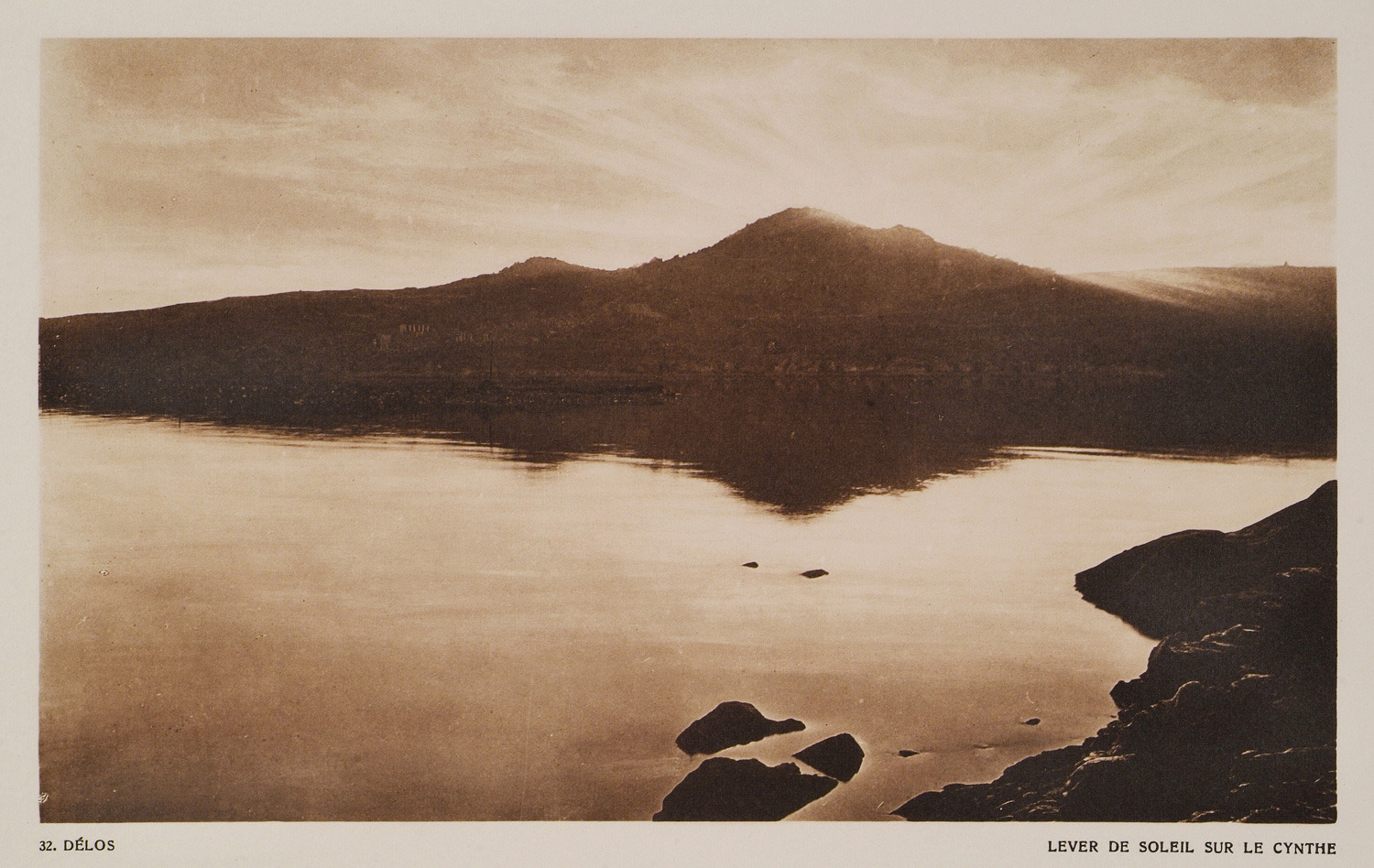
An Early Cycladic settlement of the same period was unearthed on the peak of Mount Kynthos on Delos. This settlement was built around a central apex and was fortified with a wall and (probably) horseshoe-shaped bastions.
In this settlement, the protective wall was made of the houses’ thick outer walls that surrounded the flat top of the hill. The habitation insulae were organized in the same fashion as in Kastri and Panormos. Additionally, unique arched buildings were found in the settlement (known only from Orchomenos, Early Helladic III). The settlement at Kynthos was abandoned during the Εarly Cycladic IIIA period (which occurred at the end of the 3rd millennium BC).
EARLY CYCLADIC III PERIOD (2300 – 2000 BC)
The evidence for settlements of the Early Cycladic III period (2300 – 2000 BC) is scarce and mainly comes from the remains of City I at Phylakopi on Melos.
It is commonly assumed that this large city was organized in an urban design, which consisted of small houses with elaborate construction.
CONCLUSIONS
The fortified settlements of the second half of the 3rd millennium BC indicate that a potential military conflict at Kastri on the island of Syros and Korfari ton Amygdalion in Panormos on Naxos – as well as their abandonment – took place. Scholars have interpreted this as a consequence of unrest in the Cycladic islands, possibly due to the arrival of foreign populations from Asia Minor.
However, the influence of the East on the Cycladic islands is a complex issue, as the intensification of metallurgy opened new trade routes and inevitably led to new cultural contacts and interactions. Settlements of the end of the 3rd or the beginning of the 2nd millennium BC have been found, which could be characterized as small cities. This transitional period was a time of evolutionary change and pioneering transformations in the wider Aegean region.
